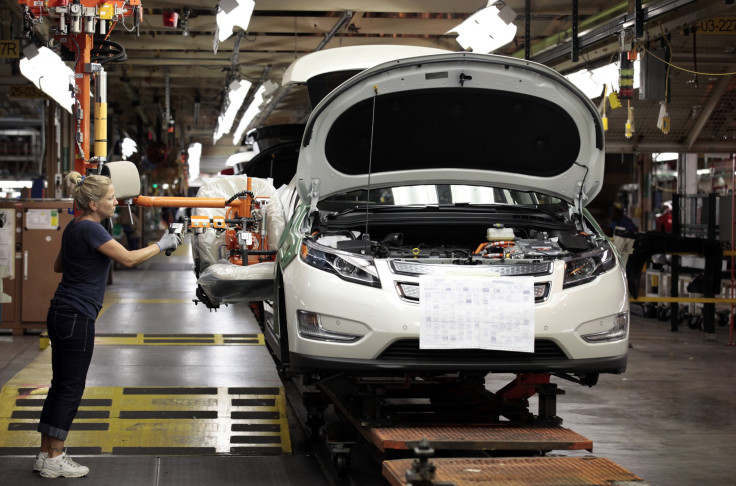US Clean Energy Companies Added Fewer Jobs In 2014, Signaling Slowdown In Sector's Jobs Growth: Report

More than 47,000 new jobs cropped up last year in the U.S. renewable energy and clean transportation sectors, a new survey found. Yet despite the jobs boost, the numbers signal a notable decline in the growth of America’s clean energy economy, and experts are blaming the trend on sluggish political support and waning financial incentives for alternative technologies.
Last year’s clean energy jobs were created alongside 170 new projects -- including solar and wind energy installations, electric vehicle manufacturing and biofuel production -- and encompassed nearly every U.S. state, according to the jobs tracking analysis by Environmental Entrepreneurs, a business group and an affiliate of the Natural Resources Defense Council.
Nevada, California and New York were the top three largest job creators, respectively, thanks largely to significant developments in the solar installation and energy efficiency sectors. In coming years, Nevada in particular could see a major jobs boom as Tesla Motors Inc. builds its $5 billion battery “gigafactory” in Reno. The plant could employ 6,500 people full-time once it's up and running, according to the company.
“The clean energy revolution continues,” Bob Keefe, executive director of Environmental Entrepreneurs, said in a statement.
The report’s authors cited the expiration of a key wind energy tax credit as a major reason for the slower jobs growth. The production tax credit, which gave wind farm operators 2.3 cents for every kilowatt their turbines generated per hour, expired at the end of 2013. As a result, the number of new wind industry jobs dropped from 9,700 positions in 2013 to just 6,800 jobs last year, according to the report.
“The expiration of the wind industry’s most important federal policy … was a major setback for wind and continues to hamper its growth,” the report said. U.S. developers added just 4,850 megawatts in new turbine capacity in 2014, down from a record 13,000 megawatts in 2012, the American Wind Energy Association reported last month.
New construction and manufacturing jobs related to the mass transit industry also fell notably last year, as states declined to invest in new light rail projects or expand their public transportation systems. Environmental Entrepreneurs called on federal and state policymakers to increase incentives for clean energy projects and provide companies with the “regulatory certainty” they need to expand operations and employ more people.
In the report, the group urged lawmakers to implement the Obama administration’s proposed Clean Power Plan, which would require states to reduce carbon dioxide emissions from coal-fired power plants and adopt cleaner energy sources, including renewables, nuclear and geothermal power. Industry advocates also called for strengthening state renewable energy mandates that require utilities to source a certain percentage of their electricity mix from alternative supplies.
The 2014 jobs count follows a separate report by the U.S. Energy Information Administration, which found that electricity generation from nonhydro renewables -- including wind, solar, biomass and geothermal -- jumped by 10.9 percent last year compared with 2013. Solar power’s contribution to the U.S. mix more than doubled, while wind grew by about 8.3 percent, biomass by 5.7 percent and geothermal by 5.4 percent, according to the Electric Power Monthly report. By contrast, coal-fired power grew by only 0.3 percent, and nuclear power by 1 percent.
© Copyright IBTimes 2025. All rights reserved.





















